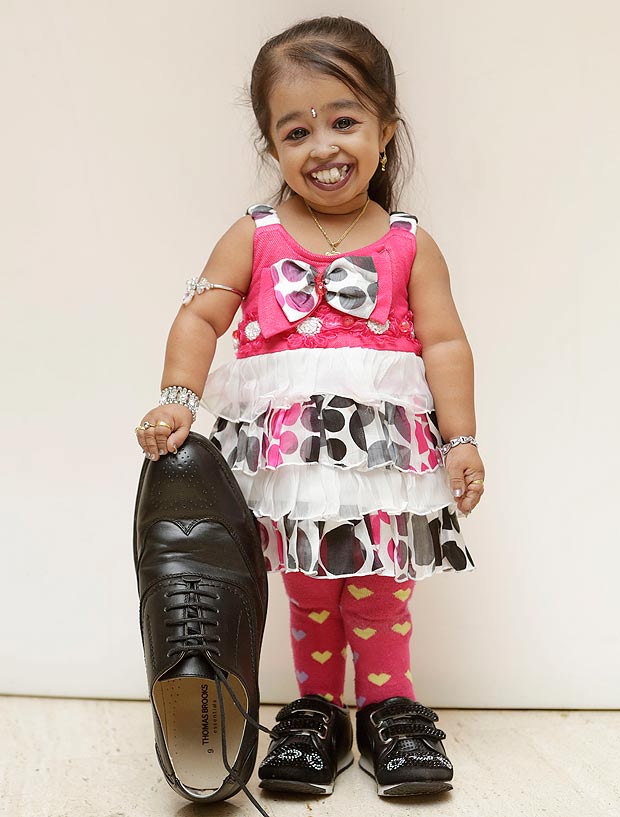Who is the world's smallest woman?
The world's smallest woman is a title given to the person with the shortest height among all women. This title can change over time as new cases are discovered or previous records are broken. It's important to note that defining "the world's smallest woman" can be challenging due to variations in measurement techniques and the dynamic nature of human growth and development.
The title of the world's smallest woman has been held by different individuals throughout history. One notable example is Pauline Musters, who lived in the Netherlands during the 19th century. She was born with a rare form of dwarfism called primordial dwarfism and stood at just 2 feet 8.5 inches (82.6 cm) tall.
There are several factors that can contribute to someone being the world's smallest woman, including genetics, nutrition, and overall health conditions. Some forms of dwarfism, like primordial dwarfism, are caused by genetic mutations that affect bone growth. Additionally, factors such as malnutrition and certain medical conditions can also impact height.
The world's smallest woman
Height and Body Proportions
- Typically, the world's smallest woman has a height below 3 feet (91.4 cm).
- They may exhibit disproportionate body features, with a relatively large head and short limbs.
Health Implications
- Individuals with extreme short stature may face various health challenges, including respiratory issues, joint problems, and developmental delays.
- Regular medical care and monitoring are crucial for their well-being.
Social and Cultural Impact
- The world's smallest woman often attracts public attention and media coverage, which can bring both opportunities and challenges.
- They may face discrimination or prejudice, but can also serve as advocates for people with disabilities.
Historical and Cultural Context
- Throughout history, individuals with dwarfism have been portrayed in various ways, from objects of curiosity to respected members of society.
- Changing societal attitudes and medical advancements have influenced the experiences and perceptions of the world's smallest woman.
Personal Stories and Achievements
- The world's smallest woman often has unique and inspiring personal stories to share.
- They may overcome challenges, pursue their passions, and make significant contributions to society.
Frequently Asked Questions about the World's Smallest Woman
This section addresses common questions and misconceptions surrounding the topic of the world's smallest woman.
Question 1: How is the world's smallest woman determined?
The title of the world's smallest woman is typically given to the person with the shortest height among all women, as measured by a qualified medical professional. Guinness World Records often recognizes and verifies such claims.
Question 2: What are the causes of extreme short stature in women?
Extreme short stature can result from various factors, including genetic conditions such as primordial dwarfism, which affects bone growth. Additionally, malnutrition and certain medical conditions can also impact height.
Question 3: What are the health challenges faced by the world's smallest woman?
Individuals with extreme short stature may face various health challenges, including respiratory issues, joint problems, and developmental delays. Regular medical care and monitoring are crucial for their well-being.
Question 4: How does society perceive the world's smallest woman?
The perception of the world's smallest woman can vary across cultures and time periods. While some may face discrimination or prejudice, others may be celebrated for their unique qualities and contributions to society.
Question 5: What are the unique experiences and perspectives of the world's smallest woman?
The world's smallest woman often has unique and inspiring personal stories to share. They may overcome challenges, pursue their passions, and make significant contributions to society, offering valuable insights into resilience and human potential.
Summary: Understanding the world's smallest woman involves recognizing the factors that contribute to extreme short stature, the health challenges they may face, and the diverse societal perceptions and experiences they encounter. It is important to approach this topic with sensitivity and respect, acknowledging the unique qualities and contributions of these individuals.
Conclusion
The exploration of "the world's smallest woman" reveals a complex interplay of medical conditions, societal perceptions, and personal experiences. Understanding the unique challenges and opportunities faced by individuals with extreme short stature is crucial for fostering inclusivity and celebrating human diversity.
While the term "the world's smallest woman" may simply refer to a physical characteristic, it also encompasses a spectrum of experiences and perspectives that challenge societal norms and inspire a deeper appreciation for the human spirit. By recognizing the dignity and individuality of every person, regardless of their physical attributes, we can create a more equitable and just world for all.
The Unbreakable Bond: Jennifer Syme And Keanu Reeves' Enduring Legacy
Understanding The Tragic Suicide Of Aubrei Leigh: Causes And Prevention
Kimberly Guilfoyle's Transformation: A Visual Journey

to Freeman Ezeiruaku's Blog World’s smallest woman Jyoti

The World's Smallest Woman Is "The Biggest Diva"